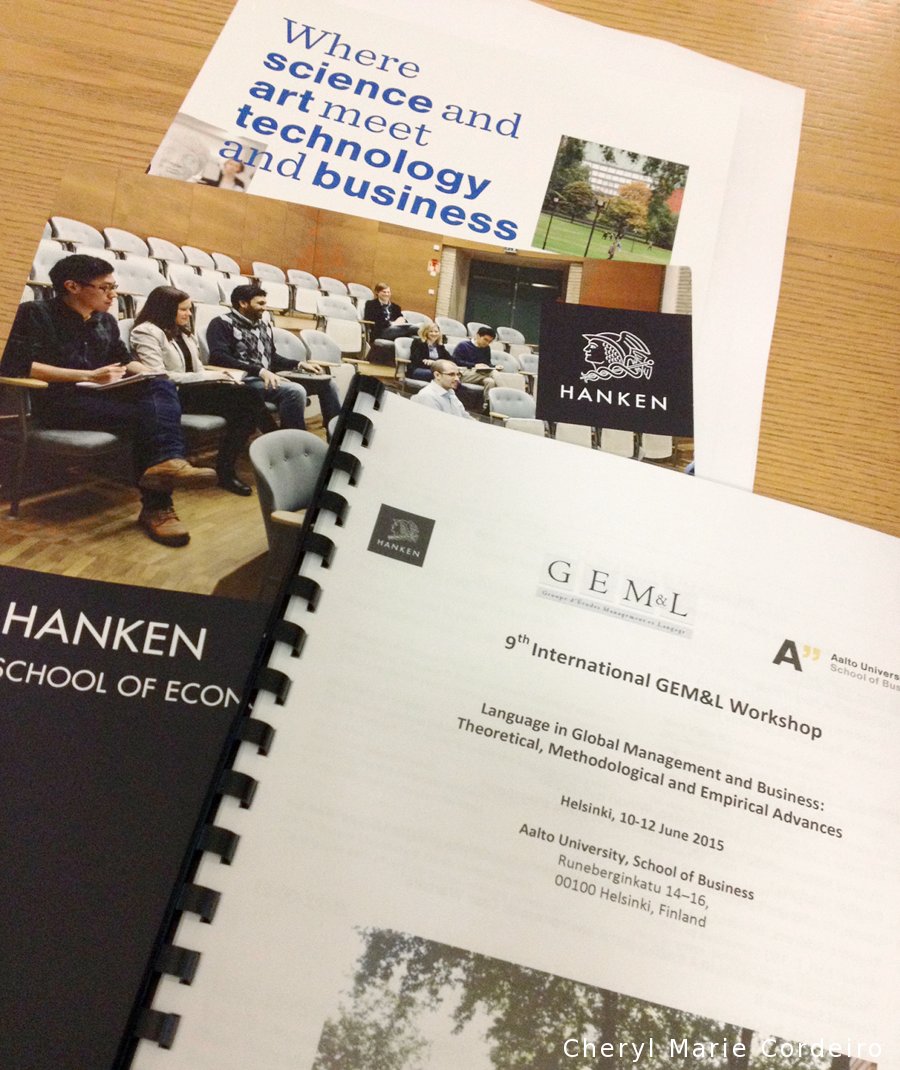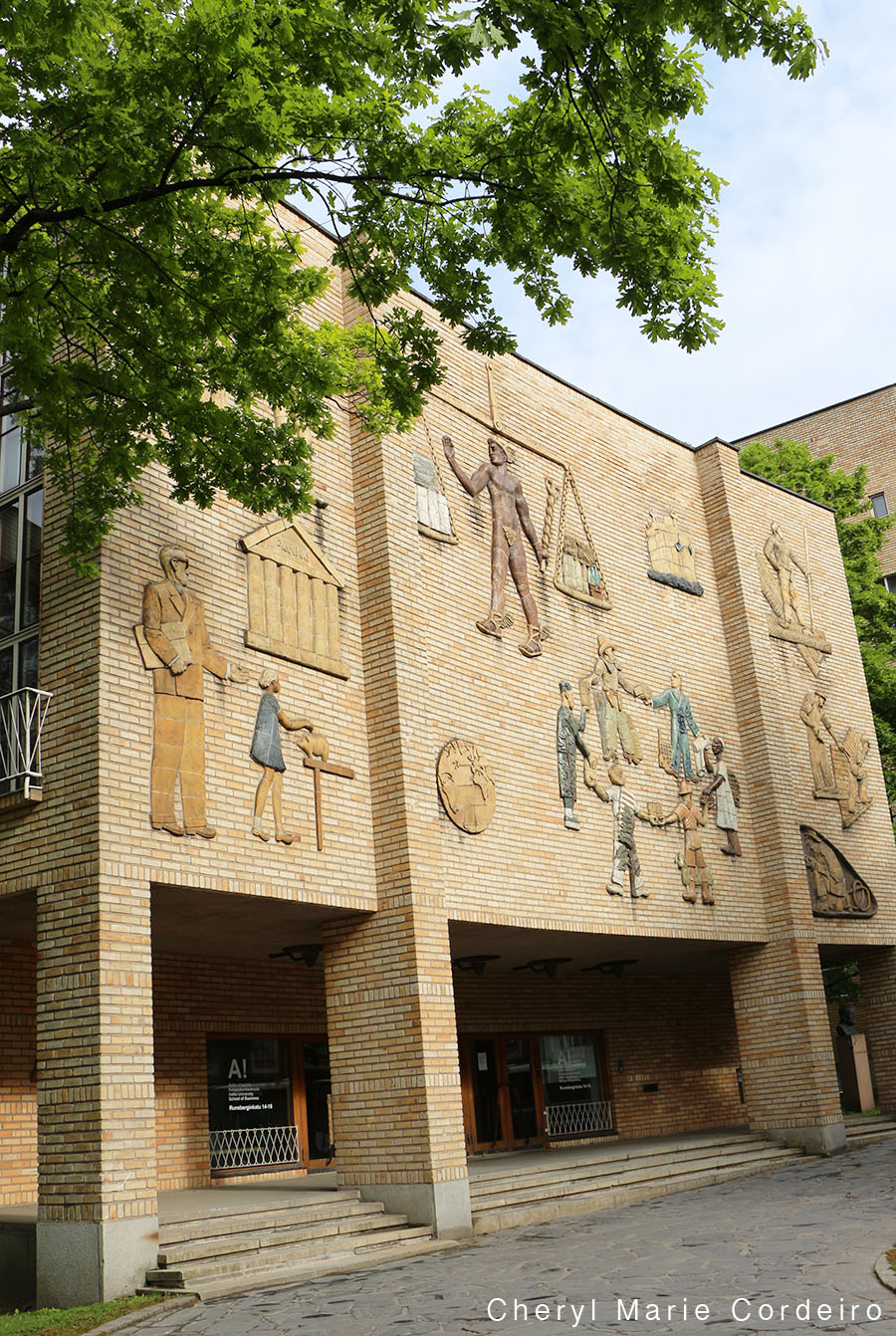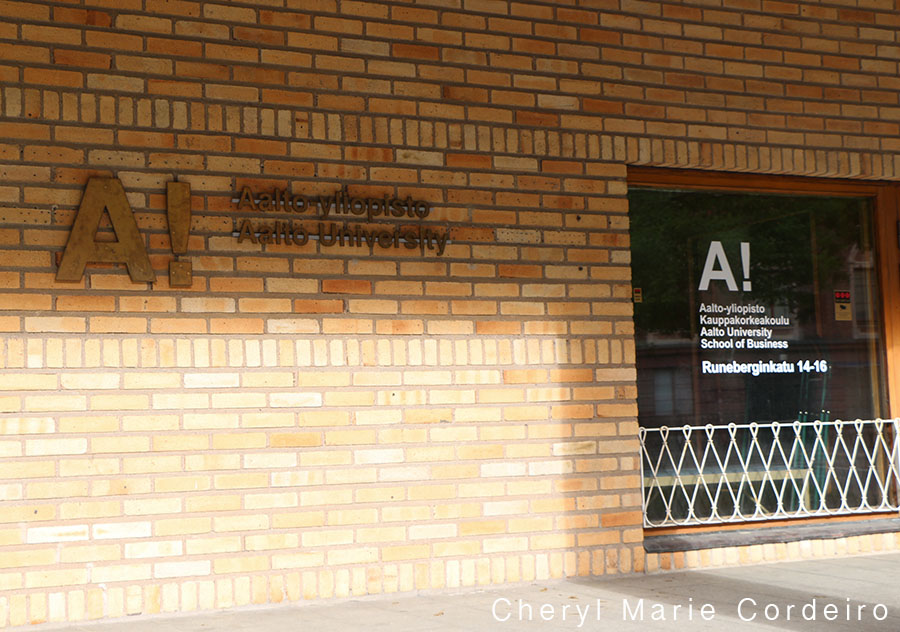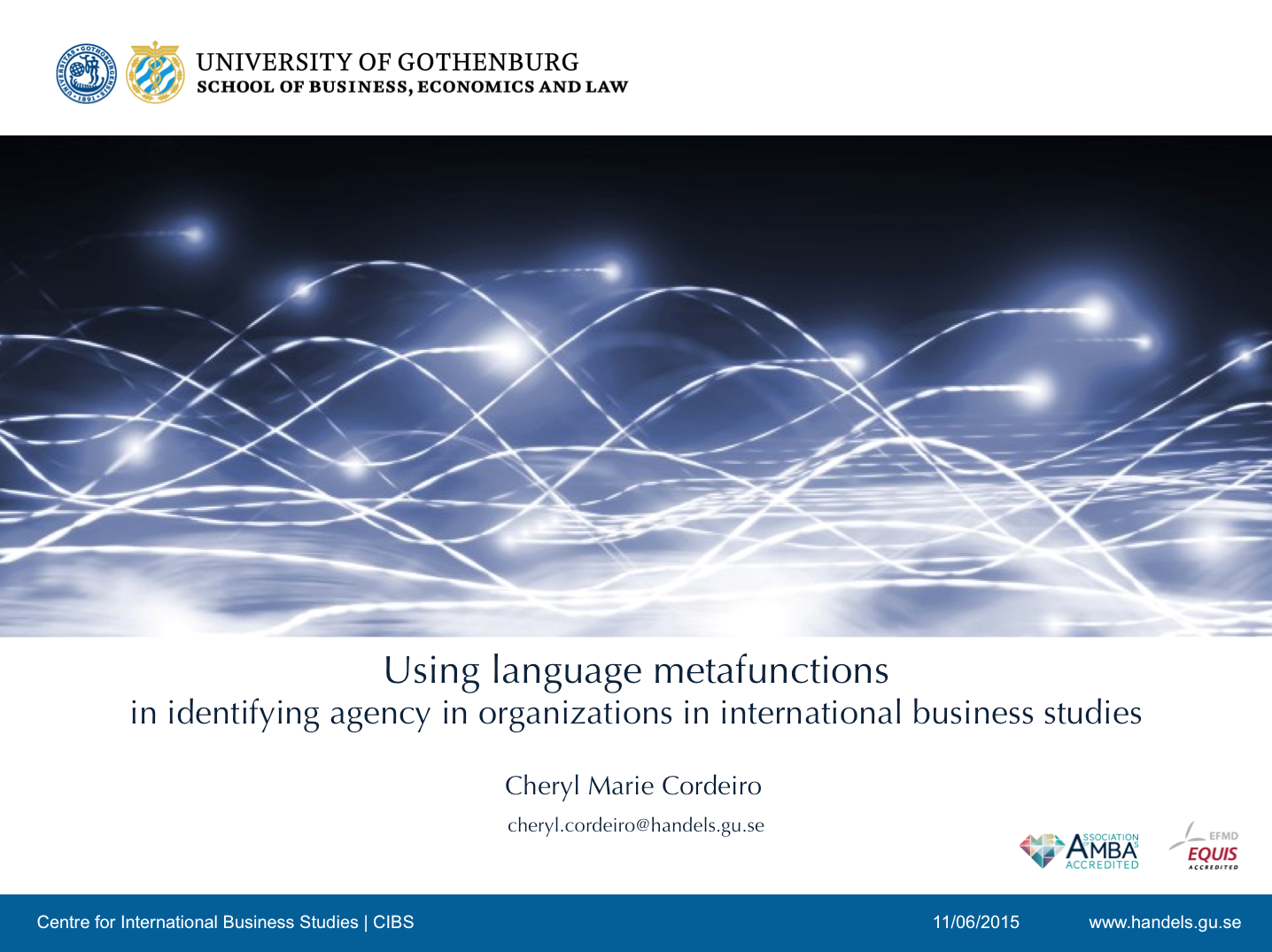The 9th international Groupe d’Études Management & Langage (GEM&L) International Workshop on the theme Language in Global Management and Business: Theoretical, Methodological and Empirical Advances.
Text & Photo © CM Cordeiro, Sweden 2015
11 to 12 June 2015 saw the 9th international GEM&L workshop take place at Aalto Univeristy, School of Business in collaboration with the Hanken School of Economics in Helsinki, Finland.
Aalto University, Helsinki, Finland.
Several prominent keynote speakers were present at this workshop, in particular, Professor Nigel Holden. Holden is author of Cross-Cultural Management: A Knowledge Management Perspective (2002), and has been credited with expanding the perspective of cross-cultural management studies from the knowledge management perspective. His theories outline cross-cultural management as a type of knowledge management in the age of the knowledge economy, which can be understood as a ’new language’ and a specific knowledge domain. Instead of differences and similarities that might cause friction at the workplace often described as cultural differences, the conceptual shift occurs when Holden presents cross-cultural management as a type of organisational knowledge that can be managed. How efficiently this was managed depended upon the core competencies of the organization.
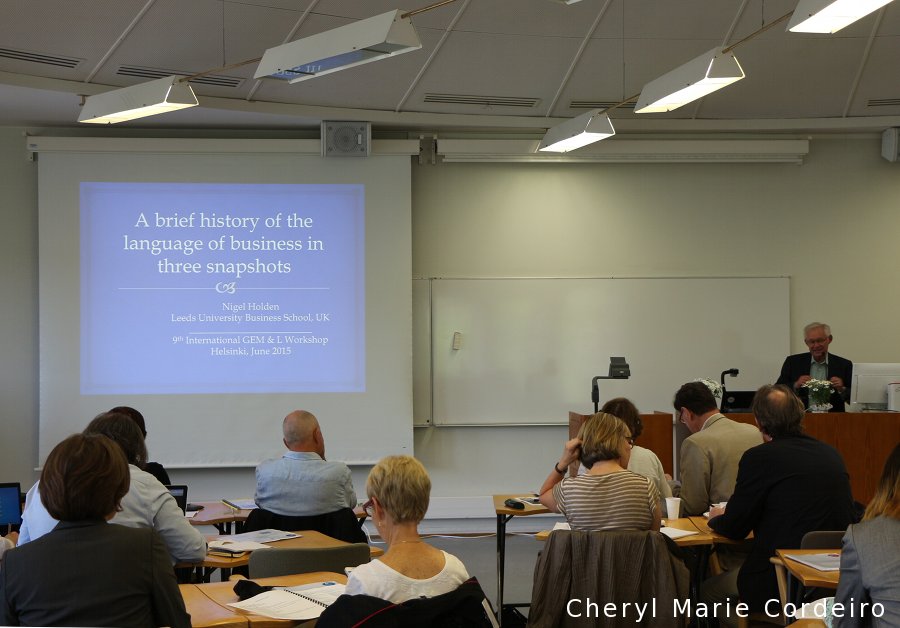
Professor Nigel Holden, in his keynote address at the GEM&L 2015 workshop.
The purpose of this workshop was to advance knowledge in the theoretical aspects of language in international business (IB) studies, focusing on cross-cultural communication.
This theme was reflected in the topic of Holden’s opening keynote address to this workshop, which revolved on the historical aspects of the language of business, focusing on the three eras of the Ancient World of the Mediterranean from c.500 BC to 250 AD, the Mediterranean business world from the 14th to 18th centuries and the contemporary era. The contribution of insight lies in that language correlates distinctly with countries and cultures across that affects how business is conducted throughout the different eras till today. In modernity, the speed and reach of modern communication technologies act as ’carriers’ of the language of business, so that we will need to navigate multilingual realities. From such a perspective, an augmented theory of language in international business (IB) studies is called for.
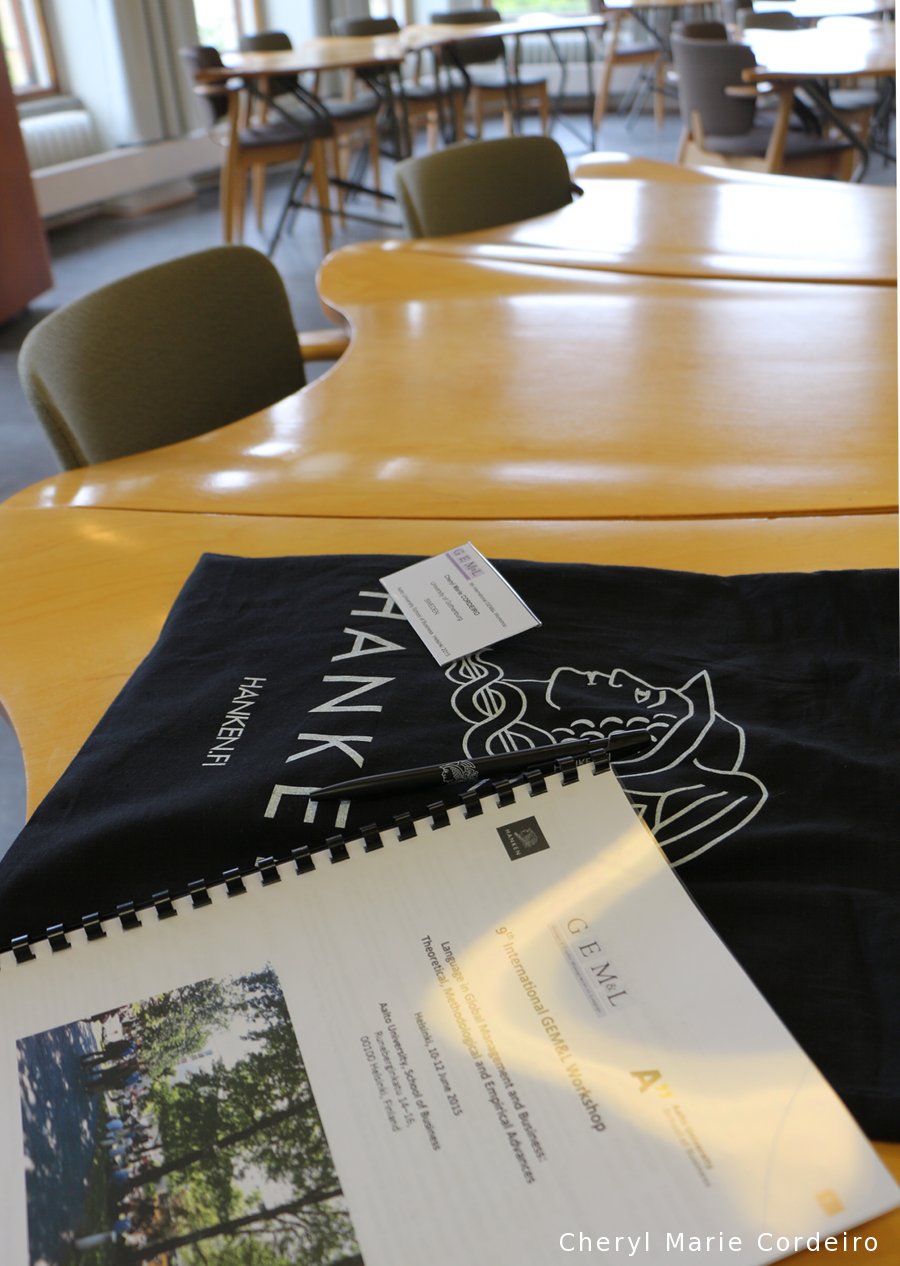
The architect of the university is Alvar Aalto, whose detail and touches to ergonomic designs are seen throughout the learning spaces. Here, a curved desk that provides relief to both eye and body during long hours of lecture. The soft curves of the desks are reflected in the beautiful corresponding curves to the ceiling lights of the room.
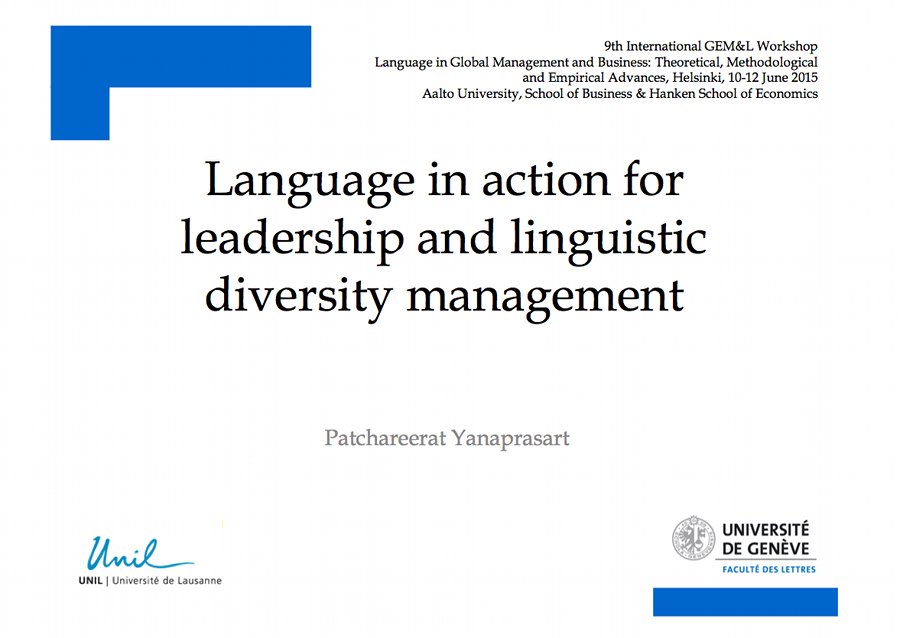
A presentation I found most interesting, by Patchareerat Yanaprasart who is based in Switzerland, studying patterns of language use in polyglossic urban areas and multilingual regions. Much of her Yanaprasart’s work is based on the assumption that multilingualism is no longer a marginal phenomenon, rather an important part of what characterises human interaction today.
Patchareerat Yanaprasart in her presentation at the GEM&L 2015 workshop.
The title of my own presentation at the workshop. The full set of presentation slides is posted on the article entitled, GEM&L 2015. 10-12 Jun. FI.
References
Holden, N. (2002). Cross-cultural management: A knowledge management perspective. Harlow: Financial Times Prentice Hall.
